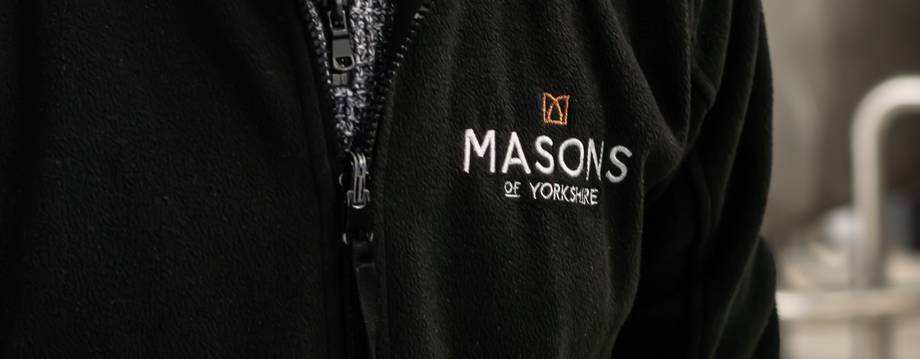Botanical magic
Still keeping it real in Huddersfield
Richard Croasdale
Saturday 11 March 2023

This article is from
Yorkshire
issue 89
Share this article
Despite having been a fan of Magic Rock for the better part of a decade, this is the first time I’ve visited its Huddersfield brewery and (multi award-winning taproom). An real institution of UK craft, Magic Rock’s Cannonball was one of the first beers I noticed cropping up dependably in ‘normal’ bottleshops in the early 2010s, leaping off the otherwise drab shelves with its modern, playful, high-contrast design.
This is also the first time we’ve spoken to Magic Rock since Odyssey Inns acquired the brewery from Austrian drinks giant Lion, which had in turn controversially purchased it and London brewery Fourpure back in 2018. While I wouldn’t begrudge any small brewery the success of being bought by a larger player, I was definitely among those who breathed a sigh of relief to see this wonderful, passionate brewery pass back into independent hands.
With 10 years of preconceptions behind me, and the Lion saga in the back of my mind, I’m really not sure what to expect when we roll up at dusk. Sadly, we’ve missed the marketing team with whom we’ve been chatting, but head of production Ariele ‘Ari’ Rovati is fortunately there to show us round.

Our first impression is that this is not a big, flashy brewery; the actual footprint is distinctly medium-sized, and space is clearly at a premium. The handful of staff are working hard, cleaning, packaging and tending to the jostling field of ceiling-height fermentation vessels. The overall sense is of a well-oiled machine, tuned for performance; a Rolls Royce engine in the body of a Vauxhall Corsa, and all the more impressive for it.
“We make quite a lot of beer in a small space,” agrees Ari. “Everything is brewed and packaged here, then moved to a temperature controlled warehouse across the road. We brew 50-hectolitre batches, two or sometimes three times a day, on what is really a very traditional brewing system. We have a traditional mash tun – not like the modern mash mixer and lauter tun you see on many modern systems this size – but it all reflects the fact that we’re at heart quite a traditional brewery, with an eye on modern American craft.”
Ari walks us through the whole process, from raw materials arriving at one door to casks, kegs and cans rolling out of another. He’s keen to credit the yeast for its hard work – “as brewers we just make wort, the yeast makes the beer” – and highlights the attention that goes into keeping it healthy. He also points out several pieces of kit of which he’s clearly proud, including the CIP (cleaning-in place) unit, and the brewery’s high-spec centrifuge.
“Magic Rock has always invested in very good equipment,” he says, as we stand on the metal gantry running overlooking the brewhouse. “It’s expensive, but it’s always been our way to invest in quality. So we watch our yeast, we have scrupulous hygiene, we have the best equipment for monitoring dissolved oxygen, and all our finished beer is stored in a large chilled warehouse; very few breweries of our size have that.”

For this month’s Beer52 box, Magic Rock has collaborated with local gin maker Mason’s, for a botanically-infused G&T IPA. When we were last down in these parts, we had the pleasure of catching up with husband and wife team Karl and Catherine Mason, who founded the distillery in 2013. In keeping with Magic Rock’s own no-compromise approach, Catherine explained at the time how Mason’s goes about crafting its fiendishly smooth gin.
“I think the biggest difference between us and the big guys is that mass produced gin is often distilled in concentrated form,” she says. “So they'll have 1000 litres that’s actually gone through the still with the botanicals, and then dilute that with maybe 10,000 litres just of neat alcohol.
“So what you get in your glass is a mix of concentrate and base spirit in a ration of nine-to-one. We make ours gin in what's called a single-shot method; it all goes through the still and when it comes off we only water it down to bottling strength. That's why there's no burn or anything.”
For the collaboration, Karl and Catherine visited Magic Rock with several boxes of classic gin botanicals, and workshopped which peels, herbs and spices would pair with which varieties of hop. The final recipe is a perfectly balanced blend of juniper (obviously) with orange and grapefruit peel, coriander seeds and several different kinds of pepper, alongside a dry hop bill including Citra, Chinook and Lemondrop.
Share this article

